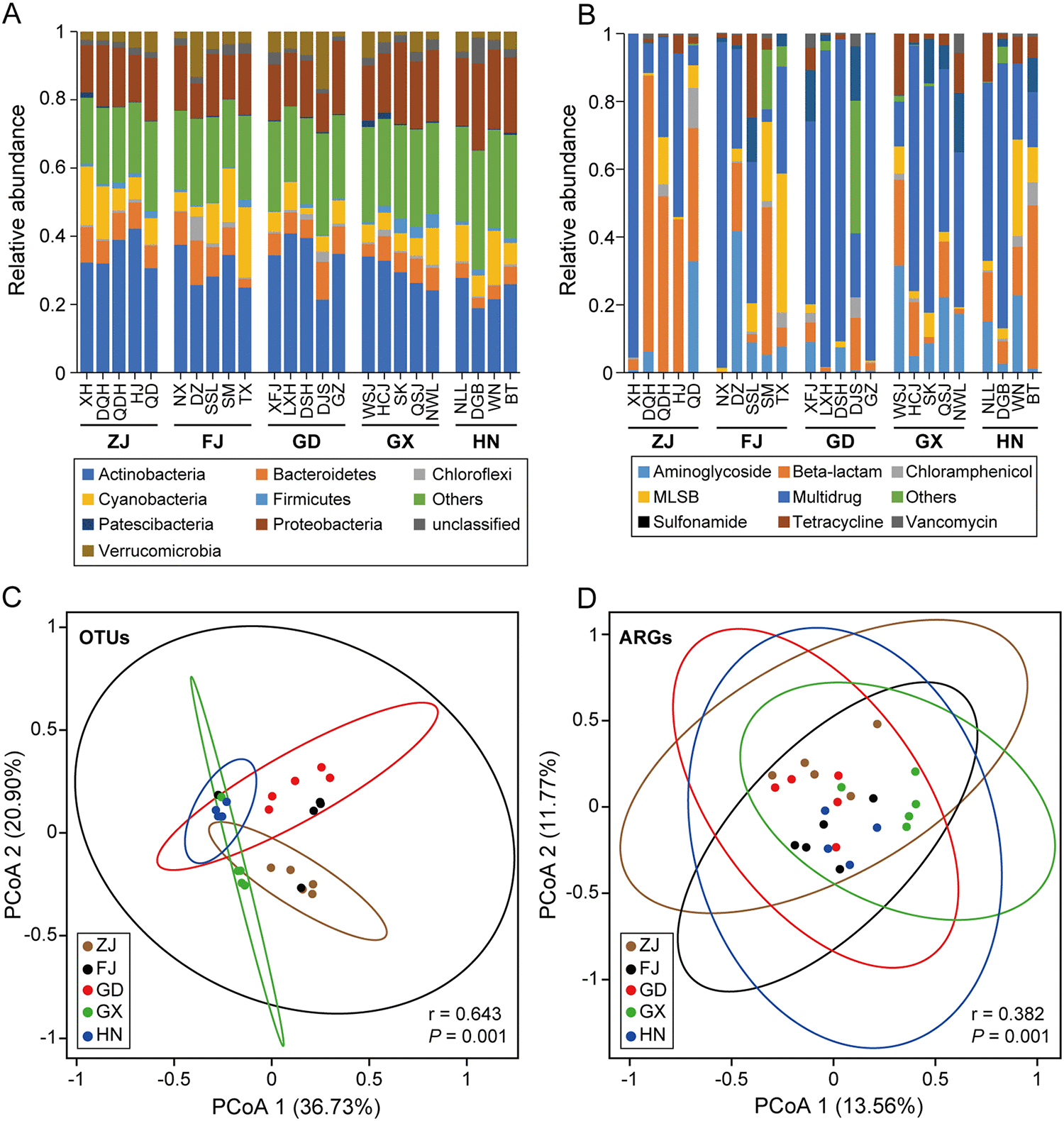| Location: Home > Papers |
| First Author: | FANG Peiju |
| Abstract: |
Freshwater ecosystems are important sources of drinking water and provide natural settings for the proliferation and dissemination of bacteria and antibiotic resistance genes (ARGs). However, the biogeographical patterns of ARGs in natural freshwaters and their relationships with the bacterial community at large scales are largely understudied. This is of specific importance because data on ARGs in environments with low anthropogenic impact is still very limited. We characterized the biogeographical patterns of bacterial communities and their ARG profiles in 24 reservoirs across southeast China using 16S rRNA gene high-throughput sequencing and high-throughput-quantitative PCR, respectively. We found that the composition of both bacterial communities and ARG profiles exhibited a significant distance-decay pattern. However, ARG profiles displayed larger differences among different water bodies than bacterial communities, and the relationship between bacterial communities and ARG profiles was weak. The biogeographical patterns of bacterial communities were simultaneously driven by stochastic and deterministic processes, while ARG profiles were not explained by stochastic processes, indicating a decoupling of bacterial community composition and ARG profiles in inland waters under relatively low-human-impact at a large scale. Overall, this study provides an overview of the biogeographical patterns and driving mechanisms of bacterial community and ARG profiles and could offer guidance and reference for the control of ARGs in drinking water sources. IMPORTANCE Antibiotic resistance has been a serious global threat to environmental and human health. The "One Health" concept further emphasizes the importance of monitoring the large-scale dissemination of ARGs. However, knowledge about the geographical patterns and driving mechanisms of bacterial communities and ARGs in natural freshwater environments is limited. This study uncovered the distinct biogeographical patterns of bacterial communities and ARG profiles in inland waters of southeast China under low-anthropogenic impact at a large scale. This study improved our understanding of ARG distribution in inland waters with emphasis on drinking water supply reservoirs, therefore providing the much-needed baseline information for future monitoring and risk assessment of ARGs in drinking water resources.
|
| Contact the author: | YANG Jun |
| Page Number: | |
| Issue: | |
| Subject: | |
| Impact Factor: | |
| Authors units: | |
| PubYear: | 2022 Jun |
| Volume: | |
| Publication Name: | MICROBIOLOGY SPECTRUM |
| The full text link: | https://doi.org/10.1128/spectrum.00406-22 |
| ISSN: | |
| Appendix: |
